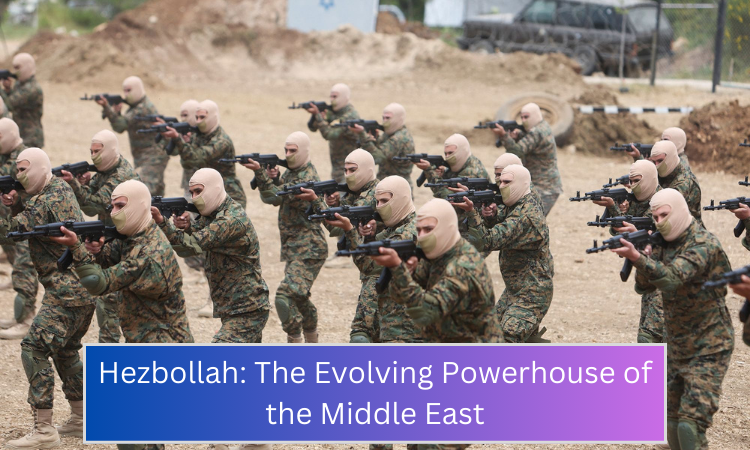
Hezbollah, often cited as the epitome of a "non-state actor," has emerged as a formidable military and political entity in the volatile landscape of the Middle East. Its journey from a Lebanese Shia political party to an armed force rivaling the strength of some national armies is a testament to its adaptability, strategic vision, and the complex geopolitics of the region.
Hezbollah's establishment was an answer to Israel's invasion of Lebanon in 1982. Initially formed as a light infantry force, it quickly gained ground, thanks in part to its grassroots connection with the Lebanese Shia community and significant external support, particularly from Iran. The group’s military might, often considered stronger than the Lebanese Armed Forces (LAF), has grown substantially, boasting an impressive arsenal of rockets and a vast network of well-trained fighters. The connection between Iran's Islamic Revolutionary Guard Corps (IRGC) and Hezbollah is evident, with the former providing extensive financial and training support.
By 2021, Hezbollah's leader Hassan Nasrallah claimed that the organization had amassed 100,000 trained fighters. Earlier assessments from Jane's in 2017 placed their strength at over 25,000 full-time fighters with an additional 20,000-30,000 reservists. While there exists a disparity in numbers, what remains consistent is the acknowledgment of Hezbollah's military prowess. This potency is further underscored by its annual military budget, which US officials estimated to be $700 million in 2018.
A significant portion of Hezbollah's military posture is directed against Israel. With estimates of their rocket arsenal ranging from 40,000 to a staggering 150,000, Hezbollah's capacity to strike Israel surpasses that of many nations. Their military strategy is intricately designed, using rockets as an offensive measure while employing light infantry and anti-armor units to safeguard their launch sites in southern Lebanon.
Despite its vast rocket arsenal, Hezbollah's conventional warfare capabilities are seen as quantitatively and qualitatively inferior to the Israel Defense Forces (IDF). However, its tactical strengths, including cover, concealment, and direct fire, have been notably effective. Hezbollah's familiarity with the terrain of southern Lebanon, coupled with their elaborate network of tunnels, bunkers, and intelligence apparatus, makes them a formidable opponent.
While Hezbollah lacks manned aircraft, tanks, or armored vehicles in Lebanon due to the overwhelming air supremacy of Israel, it maintains armored assets in neighboring Syria. The possession of tanks like the T-55 and T-72 underlines the group's ability to project power beyond its traditional domain.
Hezbollah's special forces, primarily the Radwan Unit, have demonstrated their efficiency in complex operations. Trained extensively in raids and small unit tactics, they have emerged as a critical component of Hezbollah's military framework. Their operations during the 2006 war against Israel were a testament to their tactical agility and meticulous planning.
Their approach to warfare is a mix of conventional and guerrilla tactics. While they employ standard hierarchical military structures, they also embrace a cellular operational approach, offering considerable independence to local commanders. This decentralization became evident during the 2006 Lebanon War when individual villages made strategic decisions.
Despite their military successes, Hezbollah's image on the global stage is a topic of debate. They have evolved into a highly trained quasi-conventional force, with some considering them the only Arab or Muslim entity to have successfully faced Israel in combat. Yet, it is essential to note that their tactics, especially their historical use of suicide bombings targeting military personnel, have attracted criticism. Their last known deployment of a suicide bomber against a military target was in 1999.
Hezbollah, over the years, has grown from a regional Lebanese militia to a prominent military and political actor on the global stage. Its military capacity, intricate tactics, and adaptability make it a unique entity in the modern geopolitical landscape. With substantial backing from Iran, it continues to influence the balance of power in the Middle East. While the group's military might is undisputed, its methods and overarching objectives remain subjects of intense scrutiny and debate. The future of Hezbollah, embedded in the complexities of regional politics, will undoubtedly be pivotal in shaping the contours of the Middle East.